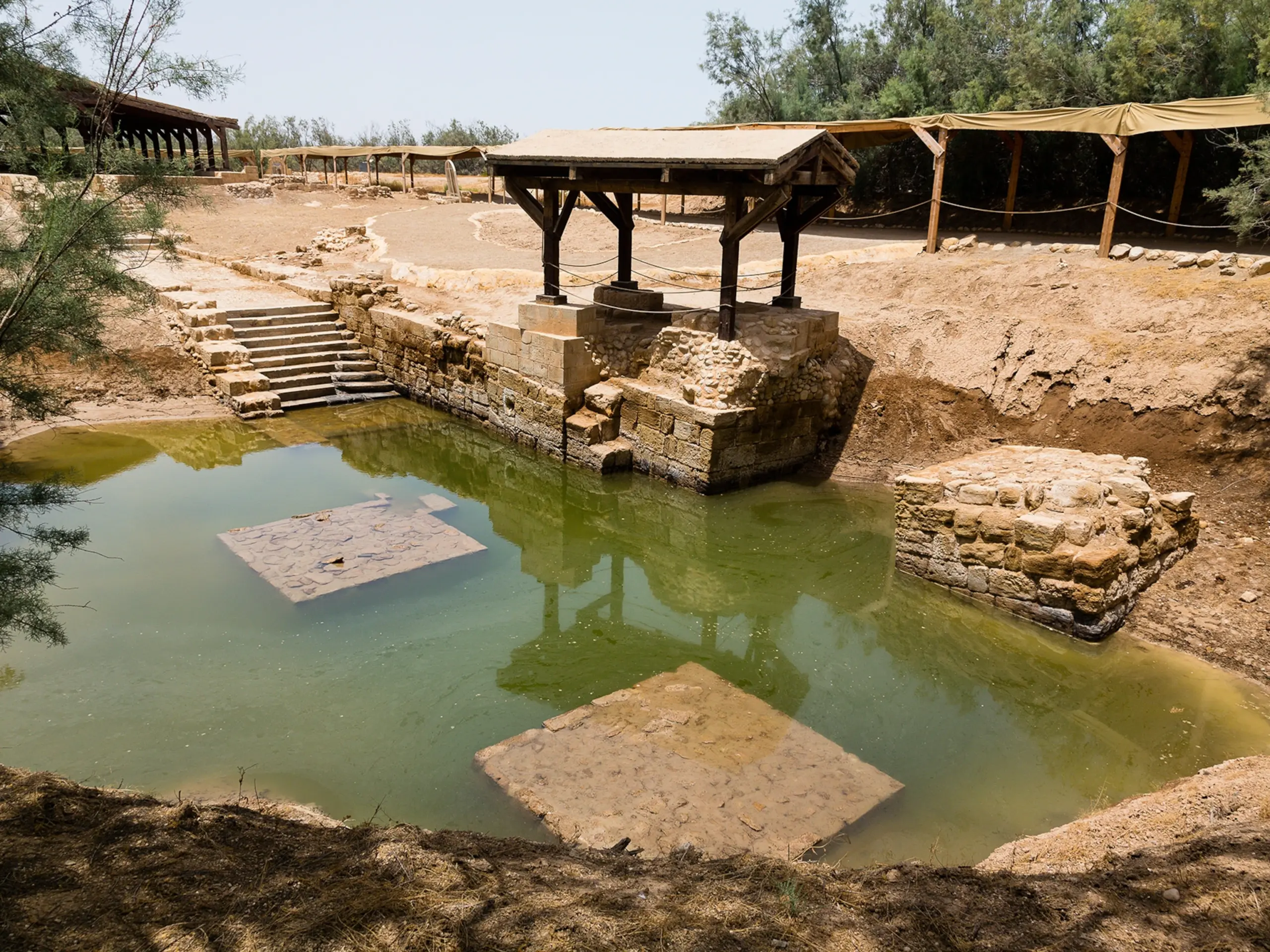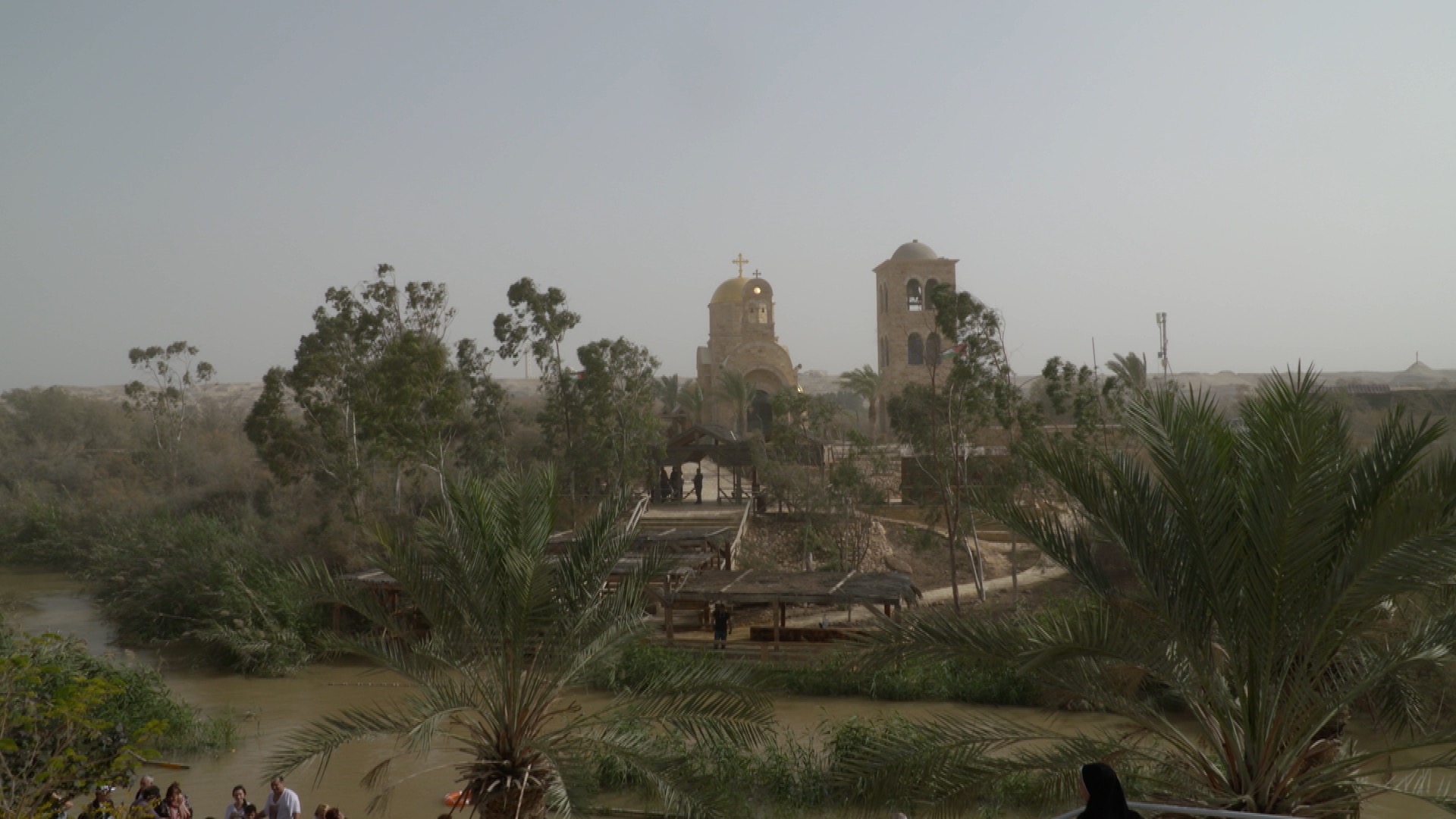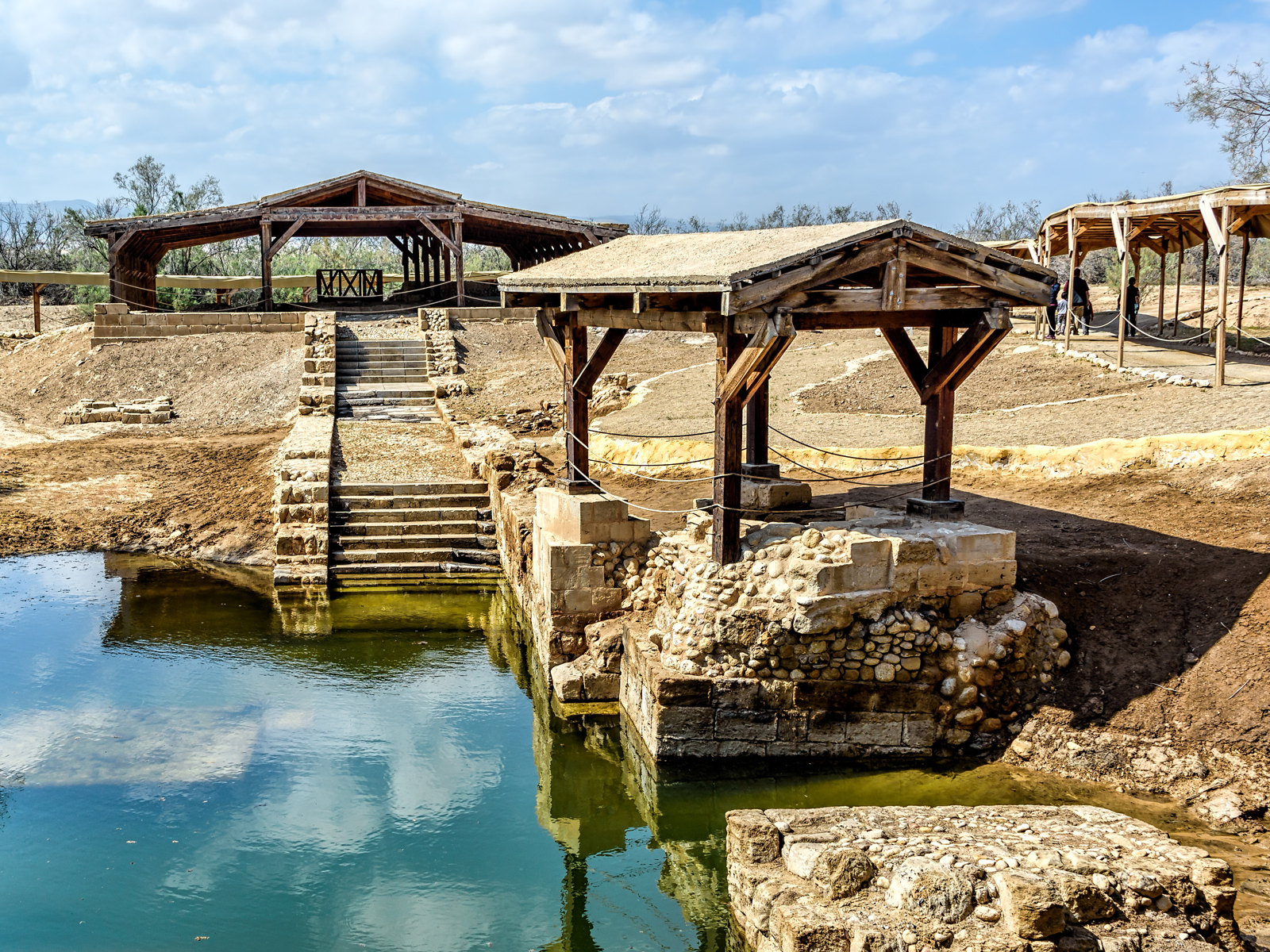
It was because of the associations with the prophet Elijah that, a thousand years later, John, an ascetic holy man with a prophetic vision, took up residence near the same hillock, using the numerous small springs of sweet water to symbolically cleanse people of sin; locals soon flocked to this John the Baptist. Most biblical mentions describe the baptisms taking place “in Jordan”, which probably referred loosely to this general area. The River Jordan, which often flooded to a width of 1km or more, would have been deep and rapid (in Aramaic, yardeen – from which “Jordan” is derived – means “fast-flowing water”), offering no easy access from the often steep bank. By contrast, the dozens of tiny side-springs, some of which rise within pools barely 100m from the river, are protected and more manageable as immersion points.


The Gospel of St John mentions “Bethany-beyond-the-Jordan, where John was baptizing”; the spot – unconnected with Bethany near Jerusalem – was also known as Bethabara or Beit-Abara, “the House of the Crossing-Point”. A later account says that Jesus “returned again across the Jordan to the place where John had first started baptizing”.
There is no explicit mention of when or where John baptized Jesus, but the accumulated weight of tradition and historical evidence places it in or near Wadi Kharrar, with plentiful supplies of spring water, alongside the Roman road between Jericho and Nebo (thereby within easy reach of potential converts), but far enough out of reach to mean that John could criticize King Herod with impunity.